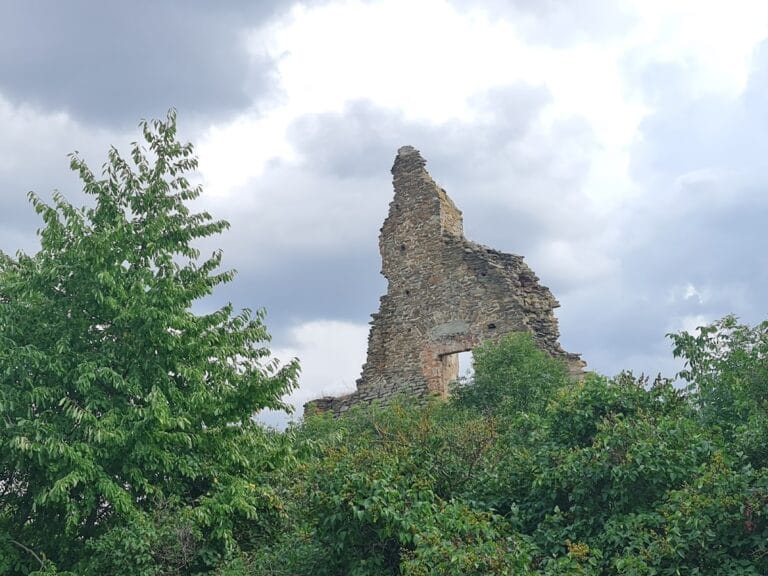Bukovina Castle: A Medieval Fortress in the Czech Republic
Visitor Information
Google Rating: 4.4
Popularity: Very Low
Google Maps: View on Google Maps
Country: Czechia
Civilization: Unclassified
Remains: Military
History
Bukovina Castle is a medieval fortress located near the village of Jiřice u Moravských Budějovic in what is now the Czech Republic. It was originally established by Bohemian nobility during the early 14th century.
The earliest reference to the area comes from 1173, when it served as the seat of a local noble named Hrut von Bukovina, suggesting the site’s importance from the medieval period onward. Around 1320 to 1325, the castle as it is known today was likely constructed to safeguard the Haberner Steig, a significant trade road linking Bohemia and Moravia. The building phase reached completion by 1337, establishing the castle as an important stronghold and residence.
For nearly a century, Bukovina Castle remained the home of the Bukovina noble family until their line ended in 1417. Ownership then passed to Johann von Weitmühl of Žerotice. During the turbulent Hussite Wars that followed in the early 15th century, the castle and the nearby settlements suffered considerable damage by fire, leading to the abandonment of the adjacent village of Bukovina.
In the mid-1400s, the estate became property of the Lords of Lichtenburg. In 1463, Hynek Bítovský von Lichtenburg mounted a rebellion against King George of Poděbrady. This uprising culminated in royal forces besieging and capturing the fortress in 1465. By 1481 Bukovina Castle had fallen into disuse and was recorded as deserted, likely never restored after the wartime destruction. The administrative functions of the estate were transferred to the nearby village of Hostim, marking the end of the castle’s active role.
Archaeological studies confirm the site saw no further habitation after the 15th century. The name Bukovina for the castle was forgotten over time, and by the 19th century locals only referred to it as the “deserted castle.” Recognized for its historical value, the ruins have been protected as a cultural monument since 1958.
Remains
Bukovina Castle occupies a strategic position on a plateau approximately 393 meters above sea level, overlooking the Nedveka valley. The fortress was constructed as a single, contiguous complex enclosed by robust defensive walls about 2.5 meters thick, built to withstand attacks.
One of the most prominent features is the round bergfried, or keep, integrated into the northern wall. This tower, with an external diameter of 10 meters and an internal space of just 3 meters across, also contained the main gate at its base, combining defense and access control in one structure. The bergfried’s circular shape is a notable architectural choice for this region.
The southern part of the castle includes a palace completed in 1337, notable for its considerable size—approximately 11 to 13 meters wide and 40 meters long. This building was two stories tall and contained vaulted rooms connected by an enclosed passageway, reflecting advanced medieval construction techniques and the importance of the residence within the castle complex.
Further extension came with a larger palace built down the slope outside the main core, incorporating a basement with two vaulted rooms linked by a portal. Additionally, a third residential building, a square donjon with reinforced corners, was situated on the castle’s southwestern promontory. The combination of a rectangular residential tower alongside a round bergfried was an uncommon design choice, illustrating a sophisticated approach to fortress layout.
The castle’s defensive arrangements included a broad, curved moat which separated it from the nearby village of Bukovina. This moat varied from 16 to 30 meters in width, providing a significant barrier against attackers. On the northeast side, where the moat narrowed, a 10-meter-wide ditch and an earthen rampart further fortified that area.
Today, the remains consist of partial sections of the southern palace, including the vaulted passageway, fragments of the encompassing castle wall, ruins of the bergfried, the castle embankment, and the outlines of the moats. These vestiges have been carefully documented through historical drawings and photographs, including a depiction from 1787 which confirms the former presence of the square donjon. The ruins remain accessible and offer a tangible connection to the medieval past of the region.







